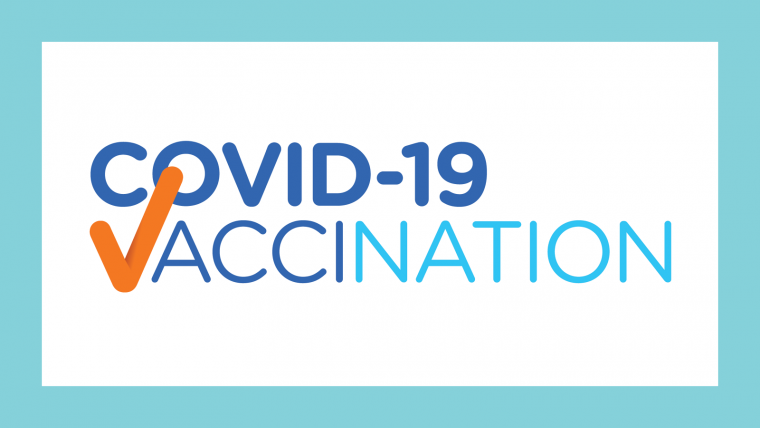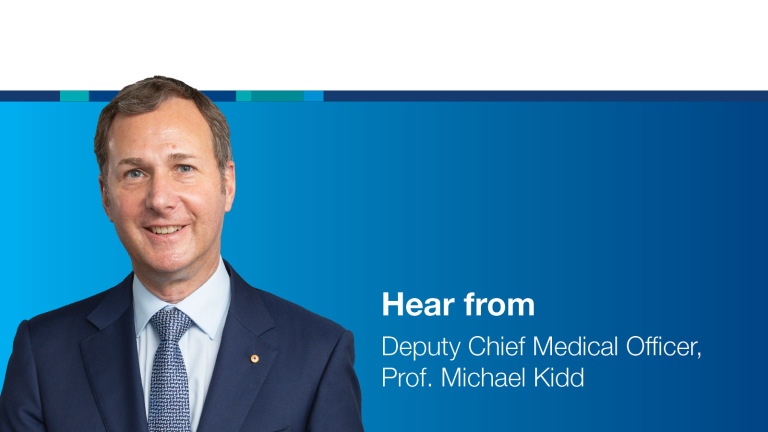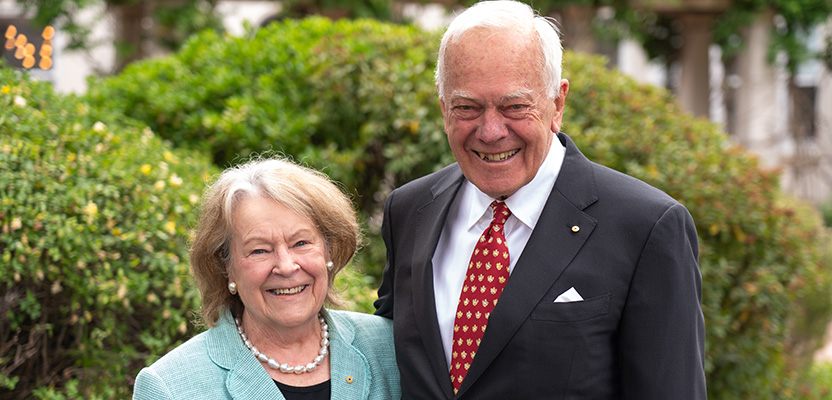
Hello and welcome to Today’s Top 3, my name is Professor Michael Kidd, Deputy Chief Medical Officer with the Australian Government, Department of Health. I’m speaking to you today from Ngunnawal country. I’d like to acknowledge the Traditional Owners of the lands where you and I are both meeting and to pay my respects to Elder’s past and present and my respects to the Elders joining me on Today’s Top 3.
Monday is Anzac Day, and for my shout out this week, I’d like to pay tribute to everyone who has served in Australia’s Defence Forces in the past, and all of our current serving Defence Force members. Thank you for the contributions that you have made to our nation, and to our world. And a special thanks to all the Defence Force members who’ve been involved in supporting us with the COVID-19 response in Australia. Monday is a very important day of remembrance, and again, thank you, lest we forget. So we’re now seeing numbers of cases of COVID-19 starting to plateau in many parts of the country, still significant numbers of new infections being diagnosed each week. Over the past week, nearly 400,000 new infections have been reported from right across Australia. So there’s still a significant amount of COVID-19 circulating in our community in many parts of the country. And many of your questions have been about, what symptoms to look out for? What should we be doing? Whether we should still be wearing masks and physical distancing? And also questions about the treatments available for people who are diagnosed with COVID-19. So let’s see what your top 3 questions are this week.
And the first one is, should I still be wearing a mask or worrying about physical distancing? So as I mentioned, even though we’re seeing some of the requirements for wearing masks being lifted in some of the states and territories, you may still decide that you would like to wear a mask in certain settings, it’s entirely up to you. And now everyone in Australia has the opportunity to assess your level of risk, which may relate to your own health condition, it may relate to the setting or the environment that you’ll be moving around in, it may relate to the people that you’ll be mixing with, the decision in many cases is yours. If you are elderly or immune compromised or have a serious medical condition, you may still choose to wear a mask in settings where physical distancing is not going to be possible. For example, if you’re in crowded settings, crowded shops, and particularly on public transport. If you’ve been vaccinated and your vaccination status is up to date with the two initial doses of vaccine and a booster vaccine, you may feel it’s OK, to not wear a mask in most settings, but perhaps you might carry one with you just in case you find yourself in a place where there’s lots of other people. Wearing a mask protects you from COVID-19 as well as protecting other people if you have contracted COVID-19, but don’t yet know that you have the disease. So as I say, with the mandates being lifted, the choice is up to you. There are still requirements in many parts of the country for people to wear masks when going into certain high risk settings, for example, into hospitals, into residential aged care facilities, and other settings where there are particularly vulnerable people who are at risk of becoming seriously unwell if they contract COVID-19. So please continue to follow those requirements. If you’re going into settings where masks are required, we still have a number of medical settings, clinics, general practices and others, where people are being asked to continue to wear masks in order to protect other people who may be at increased risk. Of course, vaccination is our best protection. And if you have not yet had your first two doses of a COVID-19 vaccine, or that very important booster dose, please arrange to get that done now, it’s not too late. Even if you haven’t commenced your vaccination program, you can still start that today. We still have vaccines available in general practices and pharmacies right across the country and in Aboriginal community controlled health organisations as well. So if you’ve fallen behind or you’re not up to date, please arrange to get your vaccines, if you’re one of the people who’ve been waiting for the Novavax vaccine to arrive in Australia, it’s here now, it’s widely available, and that’s available too as an option, as well. So, as I say, lots more decisions that you get to make as an individual about mask wearing and physical distancing. If you’ve got any questions, please go to health.gov.au as always, as a source of advice, or you can contact the health direct line 1800 020 080, and ask for specific advice about your own individual circumstances.
So your second question this week is, what are the symptoms of COVID-19 infection? And what do I do if I develop any of these symptoms? So just as the variants of the virus have beenchanging over the last two and a bit years, we’re also seeing some changes in the symptom that many people are presenting with. You may remember that early on, in the COVID-19 pandemic, people were presenting with cough, and shortness of breath and fever. We then had reports of people losing the sense of smell and the sense of taste. What we’re seeing particularly with Omicron is more people who are presenting with cold like symptoms of a stuffy nose or a runny nose, a dry cough, and associated with that people may get fever, you may feel nauseated, you may feel tired. Some people get vomiting, and diarrhoea. So there’s a whole spectrum of different symptoms, which may indicate that you have COVID-19. And if you have any of these symptoms, please arrange to get a test, you can either do a rapid antigen test at home, they’re freely available across the country, in pharmacies and in supermarkets, or you can arrange to get a PCR test, if you wish. Don’t just say I think I’ve got a cold, or I think I’ve got influenza, because we have no way of knowing from your symptoms, whether your symptoms are due to a cold or influenza, or COVID-19. And it’s very important that we’re picking up cases of COVID-19. Whatever happens if you develop any of those symptoms of fever, shortness of breath, cough, runny nose, sneezing, nausea, tiredness and fatigue, vomiting, diarrhoea, loss of the sense of taste, loss of the sense of smell, please stay home. And that way, you’ll stop spreading the infection to other people. I wanna say a huge thanks to everybody who when they’ve had even the mildest of symptoms have stayed home, got tested. And if they’re diagnosed with COVID-19, have been following the requirements in your state and territory. This is helping us to keep COVID-19 manageable within Australia, it’s keeping the number of cases down, it’s making sure that we don’t overwhelm our hospitals and our intensive care units, with people becoming gravely unwell from COVID-19. What we know is, while most people will have mild to moderate symptoms of COVID-19, and it can be a quite an unpleasant disease, as I’m sure many of you have experienced. We’ll still get some people who become seriously unwell, and require hospitalisation, and some people who are going to end up in intensive care units, so thank you for doing your part. As I’ve mentioned before, it’s a good idea to just be prepared at home in case you and the rest of the family have to suddenly go into isolation, with COVID-19, making sure you’ve got the flu treatments on hand at home, and making sure you’ve got someone who can do the shopping for you, if you’re not able to go to the shops or go to the pharmacy yourself. Reminder that we do have a symptom checklist on healthdirect.gov.au, that’s healthdirect.gov.au and also the Royal Australian College of General Practitioners has a wonderful resource on managing COVID-19 at home. Telling you when you can do things yourself and when it’s wise to reach out to your general practitioner or to the health direct line 1800 020 080, or when it’s wise to call an ambulance on triple zero, particularly if people become seriously unwell or develop chest pain. So that’s managing your symptoms.
The third question this week is, how do I know if I should be seeking treatments for COVID-19, if I’m infected? And as I mentioned, while many people will only develop mild to moderate symptoms. There are people in Australia who are at increased risk of becoming seriously unwell if diagnosed with COVID-19. This includes people aged 65 and above with chronic health conditions. It includes people who are immune compromised, both those who have immune disorders, those who are receiving therapies which impact their immune system, especially therapies for treating cancer, and those who may have significant disabilities, severe intellectual disability, Down syndrome, cerebral palsy, and other disabilities, which may put people at increased risk of becoming seriously unwell with COVID-19. The chronic conditions which can affect people include heart disease, lung disease, kidney or liver disease, people who have had a stroke, or who have dementia, people who have cancer and a number of other conditions. Also, treatments are available for any Aboriginal and Torres Strait Islander person aged 50 years and above if they have one of these chronic conditions as well. So all those people are eligible for a prescription for an oral treatment for managing COVID-19. At the moment, we have available one treatment Lagevrio or molnupiravir which can be prescribed by your GP,and dispensed through your local community pharmacist. From the 1st of May, we’ll also have a second treatment, Paxlovid, which is another oral treatment that’s available for people in the same risk categories. So if you fall into any of those risk categories, and you develop symptoms, it’s very important to get tested straightaway, and if your test positive for COVID-19, very important that you reach out to your GP, arrange a telehealth consultation for today, if at all possible, and talk to your GP about getting a prescription for one of these oral treatments. These treatments can help to prevent you from developing serious illness from COVID-19, can prevent people from being hospitalised with severe COVID-19.So it’s important if you fall in those risk categories, and contact your GP, talk about taking the oral treatments, the oral treatments have to be taken within five days of a diagnosis, or of symptoms developing of COVID-19. But the earlier you can start the treatments, the better. So if you can start the treatments within 12 to 24 hours of getting a positive diagnosis, they’re going to work even better than if you waited for four or five days to get onto those treatments. So please keep it front of mind, the treatments which are available for Aboriginal and Torres Strait Islander people, with risk factors over 50 for other people in Australia, aged 65, and over with risk factors or for those aged… Any adults aged 18 and above who have significant immune compromised or immune suppression or significant disabilities. If anyone in your family falls into those categories, make sure that if they get symptoms, they’re getting tested. Please don’t say I think I’ve got a cold, I think I’ve got a flu, get tested, and then get on to the treatments. And this will help to reduce the number of people with severe COVID-19 right across our country.
And that’s our Top 3 for this week, so I wish you an enjoyable long weekend with your family, your friends and your loved ones. Please, stay safe in everything that you do, and thanks for joining me this week.
Top 3 questions
- What are the symptoms of COVID-19 infection, and what do I do if I develop any of these symptoms?
- Should I still be wearing a mask or worrying about physical distancing?
- How do I know if I should be seeking treatments for COVID-19 if I am infected?









